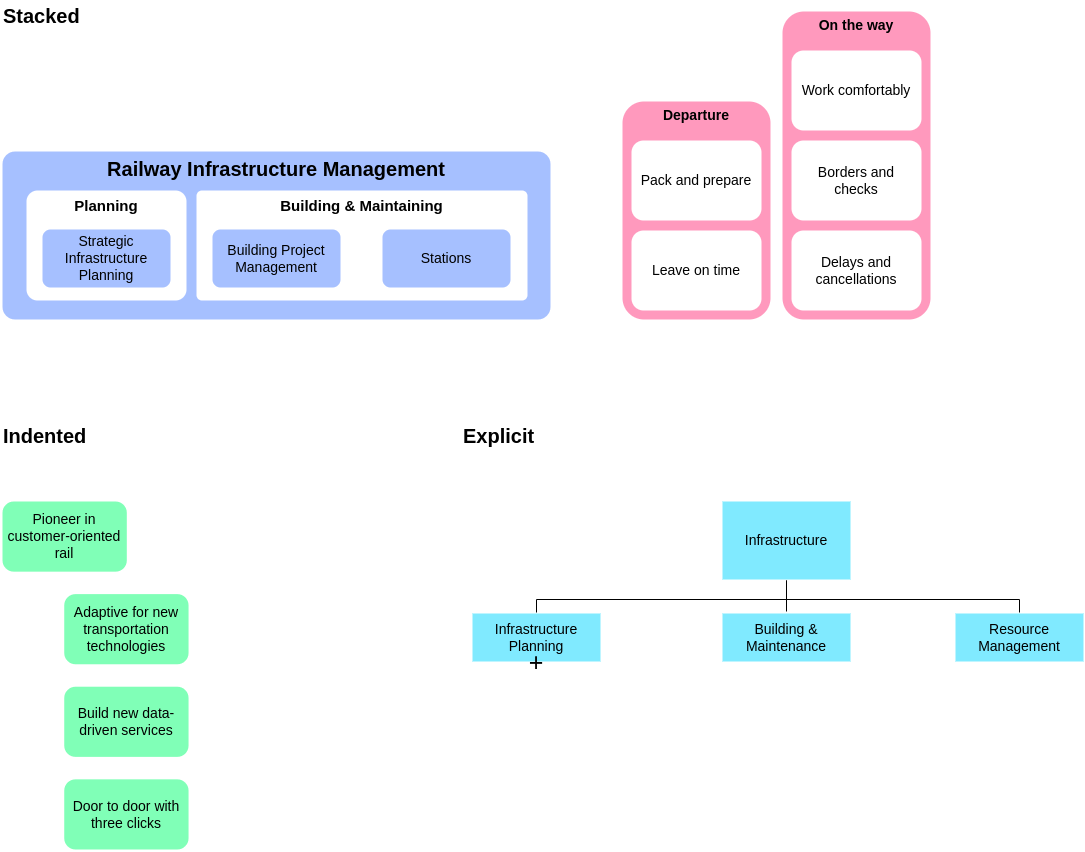m (Protected "Tree" ([Edit=Allow only administrators] (indefinite) [Move=Allow only administrators] (indefinite))) |
No edit summary |
||
| Line 20: | Line 20: | ||
*Decompose an element into its smaller sub-elements. | *Decompose an element into its smaller sub-elements. | ||
*Express that a sub-element is a part of its superior element. | *Express that a sub-element is a part of its superior element. | ||
{{#seo: | |||
|keywords=EDGY,EDGY Tree Relationship,Hierarchical Maps,Composition,Aggregation | |||
|description=In EDGY, a tree relationship represents a hierarchical whole/part relationship between elements of the same type. EDGY is Intersection Group's Open Source tool for collaborative Enterprise Design. | |||
|image=EDGY-Tree-Relationship.png | |||
|image_alt=EDGY Tree Relationship | |||
}} | |||
Latest revision as of 19:26, 8 June 2023
Enterprise Elements | Relationships
Tree
An element is part of another element of the same type.
A tree represents a hierarchical whole/part relationship between elements of the same type. Hierarchical relationships are based on degrees or levels of superordination and subordination, where the superordinate element represents a whole and subordinate elements represent its members or parts.
Notation
Examples
- An organisation is structured as a tree of departments, teams and roles.
- A capability decomposition is structured as a tree of sub-capabilities.
- A product portfolio is structured as a tree of categories, products and components.
- A brand portfolio is structured as a tree of corporate, product and special edition brands.
- A purpose and goal portfolio is structured as a tree of strategic, tactical and operational outcomes.
Use
- Decompose an element into its smaller sub-elements.
- Express that a sub-element is a part of its superior element.
